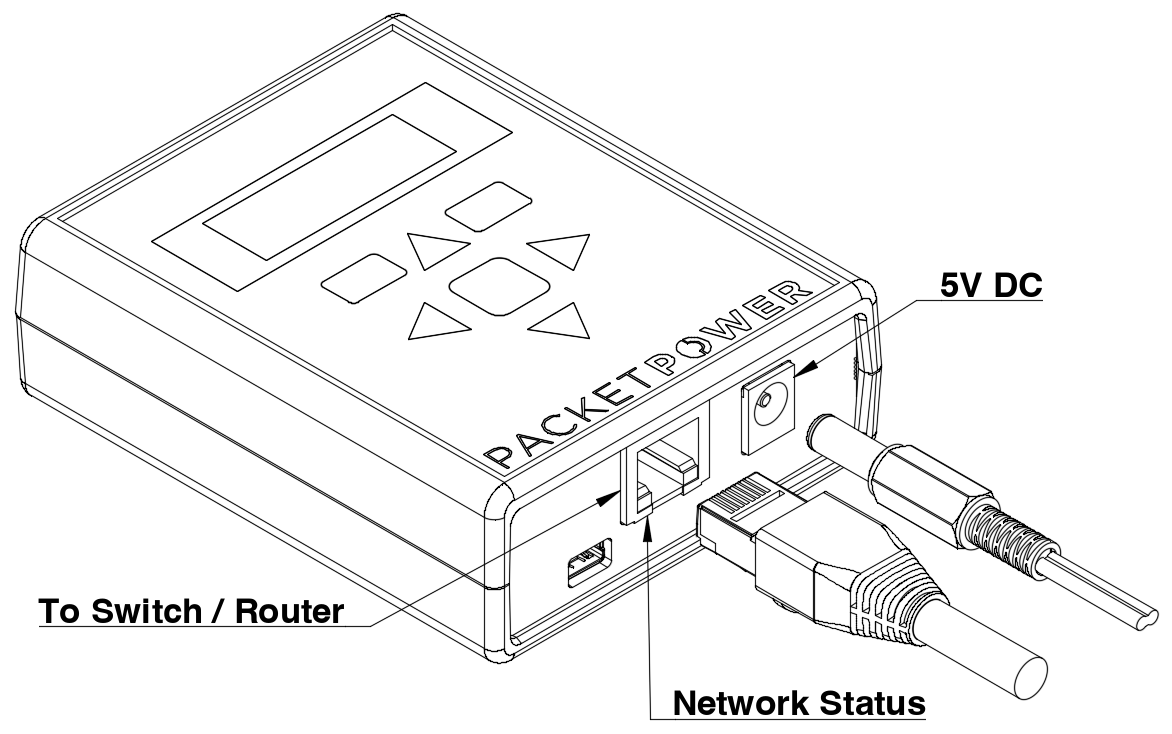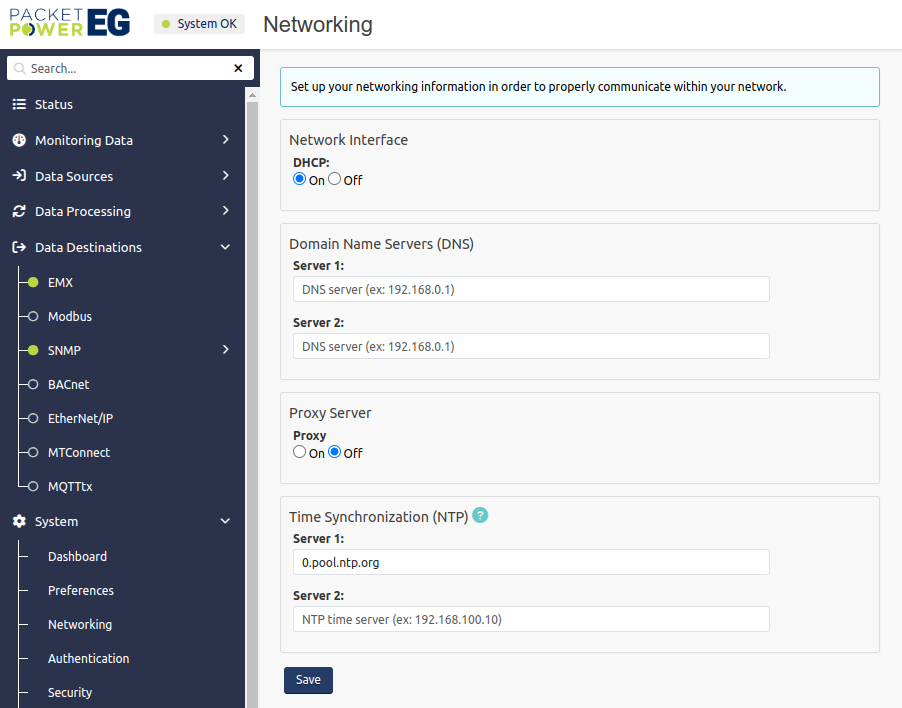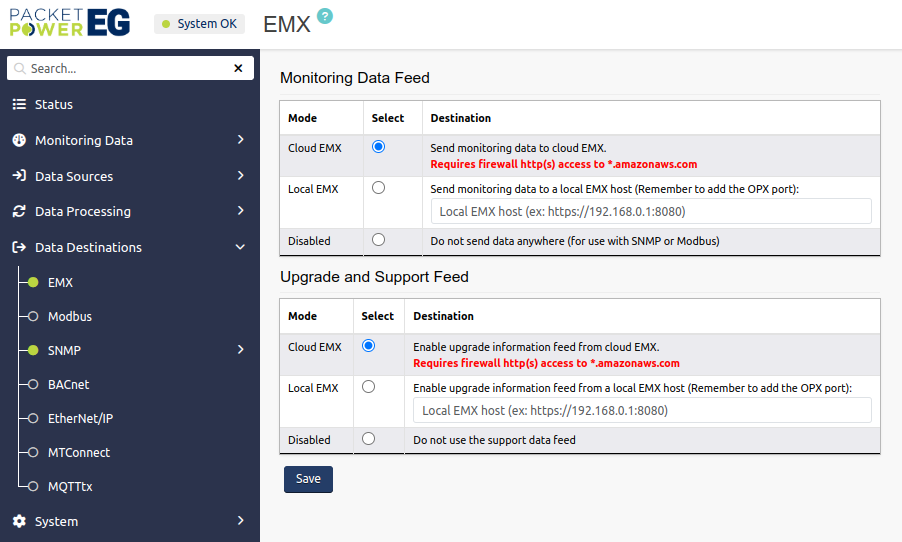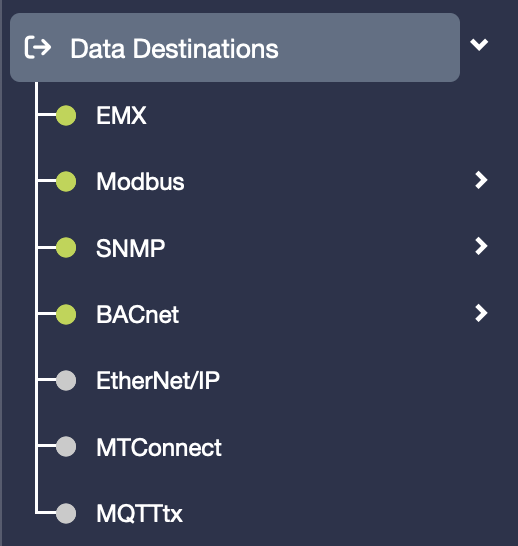This Wireless Gateway Easy Start guide explains how to configure your new Gateway. For more detailed instructions see https://dox.packetpower.com/support/current/gateway-configuration or email support@packetpower.com.
1. Physical Connections
Gateway must be connected to a network to enable configuration

-
Insert Ethernet cable into the network port and connect other end to the network.
-
Connect the universal power supply provided to the 5V DC jack to power the Gateway.
If the amber network status light does not flash, that indicates a problem with the network connection. A network connection must be established before proceeding.
2. Navigation
-
Unlock by tapping MENU three times
-
Lock by tapping EXIT
The touchpad automatically locks after 10 seconds of inactivity.
3. Configuring DHCP (Dynamic IP)
-
Using the touchpad, navigate to the DHCP settings menu
-
Select DHCP ON (default) or OFF if using a static IP address
If you are using DHCP, skip to Step 5.
4. Setting IP Address (static IP)
If using a static IP instead of DHCP, follow these steps:
-
Once DHCP is turned off, enter the IP, Netmask, and IP Gateway address
-
Note: The IP Gateway is the IP address of the network gateway, and it is NOT the IP address of the Packet Power Wireless Gateway device
-
-
A temporary IP address can be assigned and modified once you have access to the Gateway web console.
Refer to Setting Gateway IP from a Windows PC for additional instructions on setting the IP from a Windows PC.
5. Access Gateway Web Console
-
Access the gateway Console by entering the Gateway’s IP address into a web browser.
-
From the left hand menu select “System” and then the “Networking” tab.
Make sure the Gateway and browser are both connected to an accessible switch or router.
6. Network Settings
-
Click on “System” → “Networking” on the left hand menu.
-

-
If needed, enter the DNS address(es). This is typically only needed for non-DHCP networks.
-
Select a proxy server if applicable
-
Some network policies may implement access restrictions that necessitate the use of an HTTP proxy server to push data to Cloud EMX
-
Note that static IP addresses can also be modified here if DHCP is turned off.
-
Click “Save” icon to input settings.
Time Synchronization
-
Enter an NTP time server IP address or domain name
-
Available servers can be found at http://www.pool.ntp.org
-
Default time servers are
0.pool.ntp.organd1.pool.ntp.org -
Click “save” icon to input settings
7. Choose your Data Destination
-
Click on “Data Destinations” on the left hand menu.

-
Select how you want to receive your data: EMX, Modbus, SNMP, or MQTT. EMX feeds can be delivered simultaneously with Modbus, SNMP, or MQTT feeds.
-
For SNMP, Modbus, or MQTT output, ensure the Gateway is licensed correctly as indicated by a green light next to the corresponding tab under Data Destinations.

Contact Packet Power if the SNMP, Modbus, or MQTT feed needs to be enabled.
-
For more detailed support on SNMP, Modbus, or MQTT see Supported Protocols or visit http://www.packetpower.com/support .
-
Select the desired EMX implementation type (cloud is default) for both “Monitoring Data Feed” and “Upgrade and Support Feed” sections.
Ensure the Gateway IP address has outbound access to port 443 (HTTPS) for *.amazonaws.com when using cloud EMX
-
For Local EMX, enter the IP address of the server using port 8080. (e.g. xxx.xxx.xxx.xxx:8080)
-
Your Packet Power representative will set up an EMX account so you can access your data via EMX. Visit http://packetpower.com/support for more details.
We’re here to help!

ONLINE: http://packetpower.com/support
EMAIL: support@packetpower.com
PHONE: +1 877-560-8770
Online Support Documentation:
.png?cb=2869331395a1c83fe8abffe396f0cf0a)
